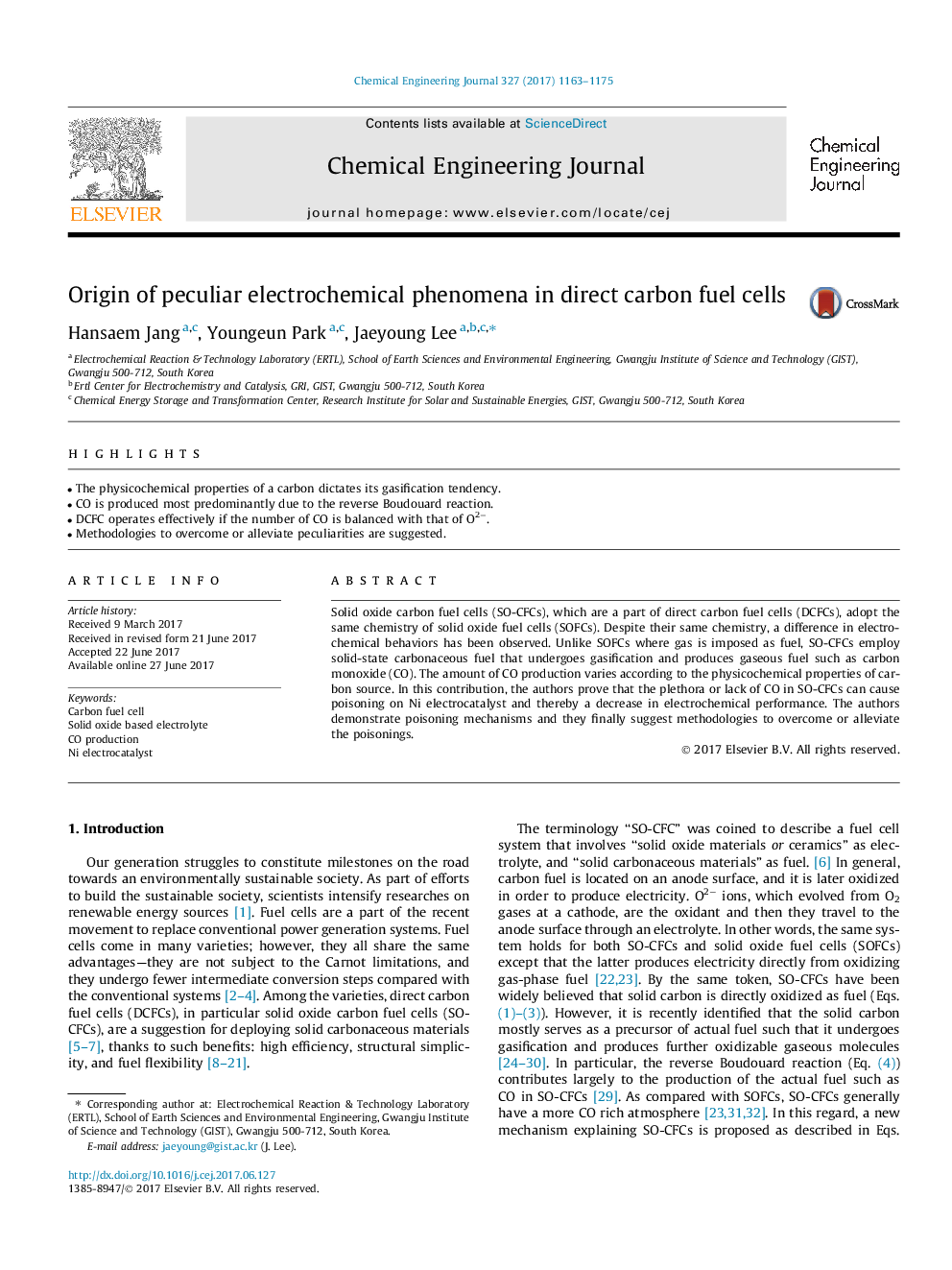| Article ID | Journal | Published Year | Pages | File Type |
|---|---|---|---|---|
| 6465172 | Chemical Engineering Journal | 2017 | 13 Pages |
â¢The physicochemical properties of a carbon dictates its gasification tendency.â¢CO is produced most predominantly due to the reverse Boudouard reaction.â¢DCFC operates effectively if the number of CO is balanced with that of O2â.â¢Methodologies to overcome or alleviate peculiarities are suggested.
Solid oxide carbon fuel cells (SO-CFCs), which are a part of direct carbon fuel cells (DCFCs), adopt the same chemistry of solid oxide fuel cells (SOFCs). Despite their same chemistry, a difference in electrochemical behaviors has been observed. Unlike SOFCs where gas is imposed as fuel, SO-CFCs employ solid-state carbonaceous fuel that undergoes gasification and produces gaseous fuel such as carbon monoxide (CO). The amount of CO production varies according to the physicochemical properties of carbon source. In this contribution, the authors prove that the plethora or lack of CO in SO-CFCs can cause poisoning on Ni electrocatalyst and thereby a decrease in electrochemical performance. The authors demonstrate poisoning mechanisms and they finally suggest methodologies to overcome or alleviate the poisonings.
